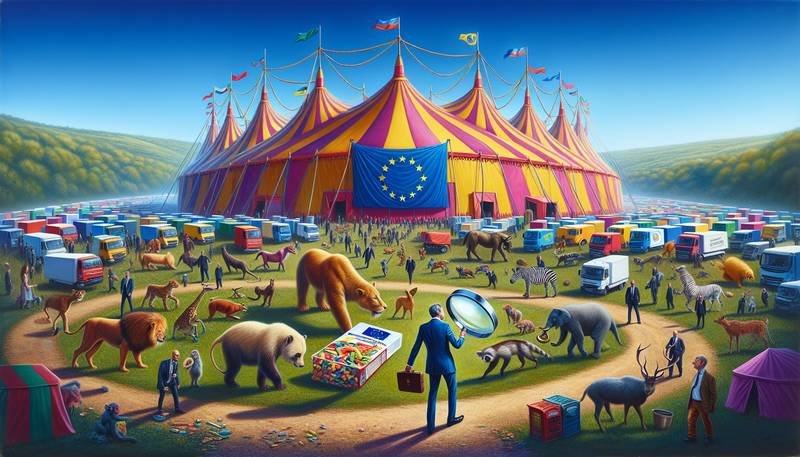EU's Commitments to Sustainable Food Systems: Analyzing Policy Shifts

The Great European Diet and Food Policy CircusWhen it comes to European Union commitments, they often seem to resemble the circus; there are a lot of big tents, fancy costumes, and wild animals running around. This is especially true when it comes to the topic of sustainable food systems. I mean, let's be honest, European food policy can be just as confusing as trying to decipher the ingredients on a packet of crisps, and that's saying something!But, fear not, my fellow food policy enthusiasts, as I am here to guide you through this bureaucratic labyrinth with the skill and dexterity of a mongoose navigating a snake-infested jungle. Together, we will tackle the EU's commitments to sustainable food systems and try to make sense of the madness.A Tale of Two Policies: CAP and the Farm to Fork StrategyIn the land of European food policy, there are two main players that manage to hog most of the spotlight: the Common Agricultural Policy (CAP) and the relatively new kid on the block, the Farm to Fork Strategy. These two policies are like star-crossed lovers trying to make their way in a world that's just itching to tear them apart. But, like any good soap opera, they keep pressing on, determined to make their love (and policies) work.The CAP is the older, more established policy on the scene; it's the granddaddy of EU food policy. It's been around since the 1960s and has been responsible for guiding European agricultural policies ever since. The main goal of CAP is to support farmers and promote sustainable food production, all while ensuring European consumers have access to a stable food supply at reasonable prices. Sounds great, right? Well, it would be if the CAP hadn't developed a bit of a reputation for supporting unsustainable farming practices and contributing to environmental degradation. Oops...Enter the Farm to Fork Strategy, the EU's attempt at a policy makeover. This new strategy is like the cool, hip younger sibling that's all about the environment and sustainability. Launched in 2020 as part of the European Green Deal, the Farm to Fork Strategy aims to transform the food system in the EU by promoting sustainable farming, reducing food waste, and improving food safety.From Farm to Fork: A Recipe for Change?Now, you might be thinking, "Okay, great, we've got these two policies, but how are they actually going to make a difference?" Well, my skeptical friends, let me introduce you to some of the main ingredients in this recipe for change:- Reducing pesticide use: The Farm to Fork Strategy wants to cut the use of chemical pesticides by 50% by 2030. This is a huge undertaking, considering how reliant the agricultural industry has become on these chemicals. But hey, Rome wasn't built in a day, and neither will a sustainable food system be.
- Supporting organic farming: The EU is aiming to have 25% of agricultural land used for organic farming by 2030. This means more support for farmers who choose to go organic and, hopefully, a shift away from the more environmentally damaging practices of conventional farming.
- Reducing food waste: Nobody likes wasting food, so the EU has set a goal of halving food waste by 2030. This will involve improving food labeling and packaging, raising consumer awareness, and encouraging more efficient use of resources throughout the supply chain.
- Improving animal welfare: Let's face it, we all love animals (well, except maybe for that one neighbor with the perpetually barking dog...), so it's good news that the EU wants to improve animal welfare standards. This includes revising animal welfare legislation and ensuring better enforcement of existing rules.
Will These Commitments Be Enough to Satiate Our Hunger for Change?While the EU's commitments to sustainable food systems look great on paper (or, you know, on the screen of your electronic device of choice), the question remains: Will they actually make a difference? After all, we've seen plenty of ambitious goals and policies crumble like a day-old baguette when faced with the harsh reality of implementation.There's no denying that the EU has its work cut out for it; transforming the food system is no small feat. But, like a master chef diligently perfecting their culinary masterpiece, the EU has the ingredients and the vision to make it happen. It's just a matter of putting it all together and hoping it doesn't end up burnt to a crisp in the oven of bureaucracy.So, grab your forks, put on your bibs, and get ready to dig into the EU's sustainable food system commitments. Just don't forget to leave room for dessert, because the world of food policy is always cooking up something new and, dare I say, appetizing!
|
|







